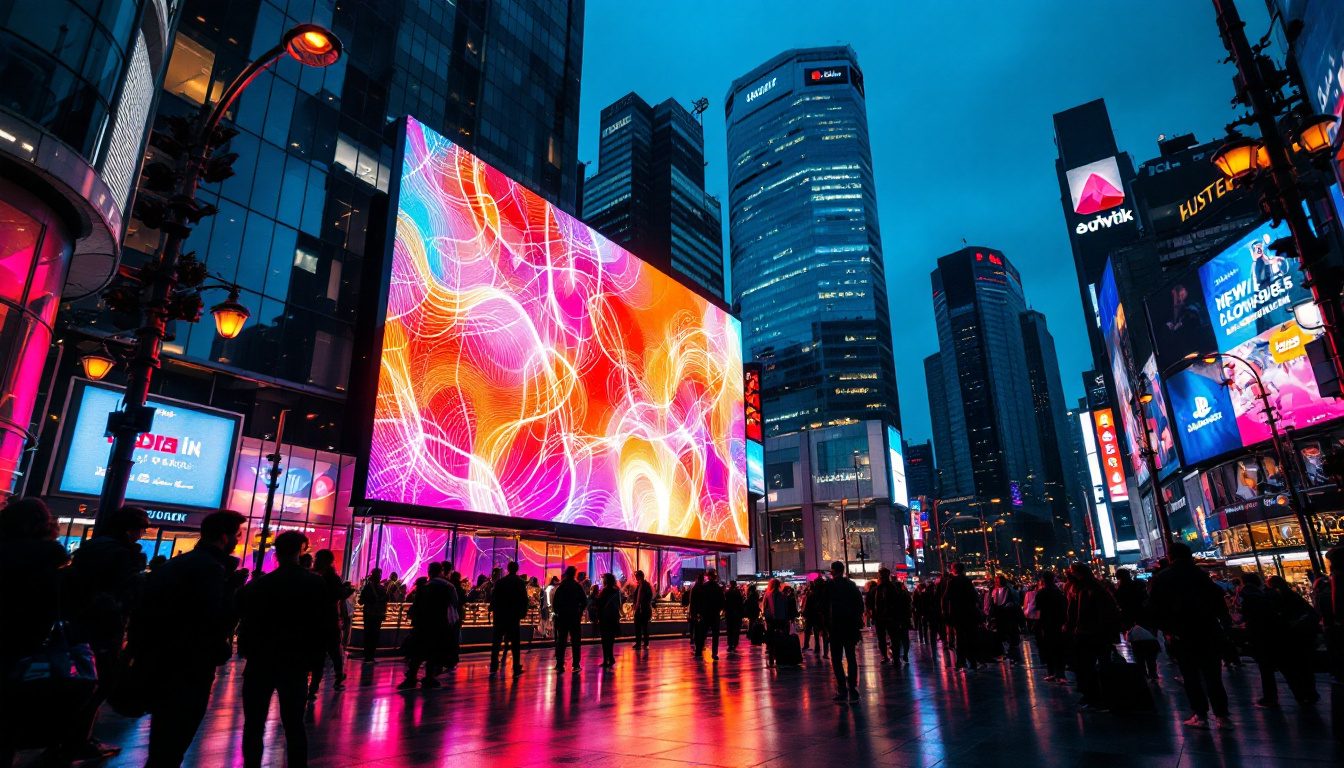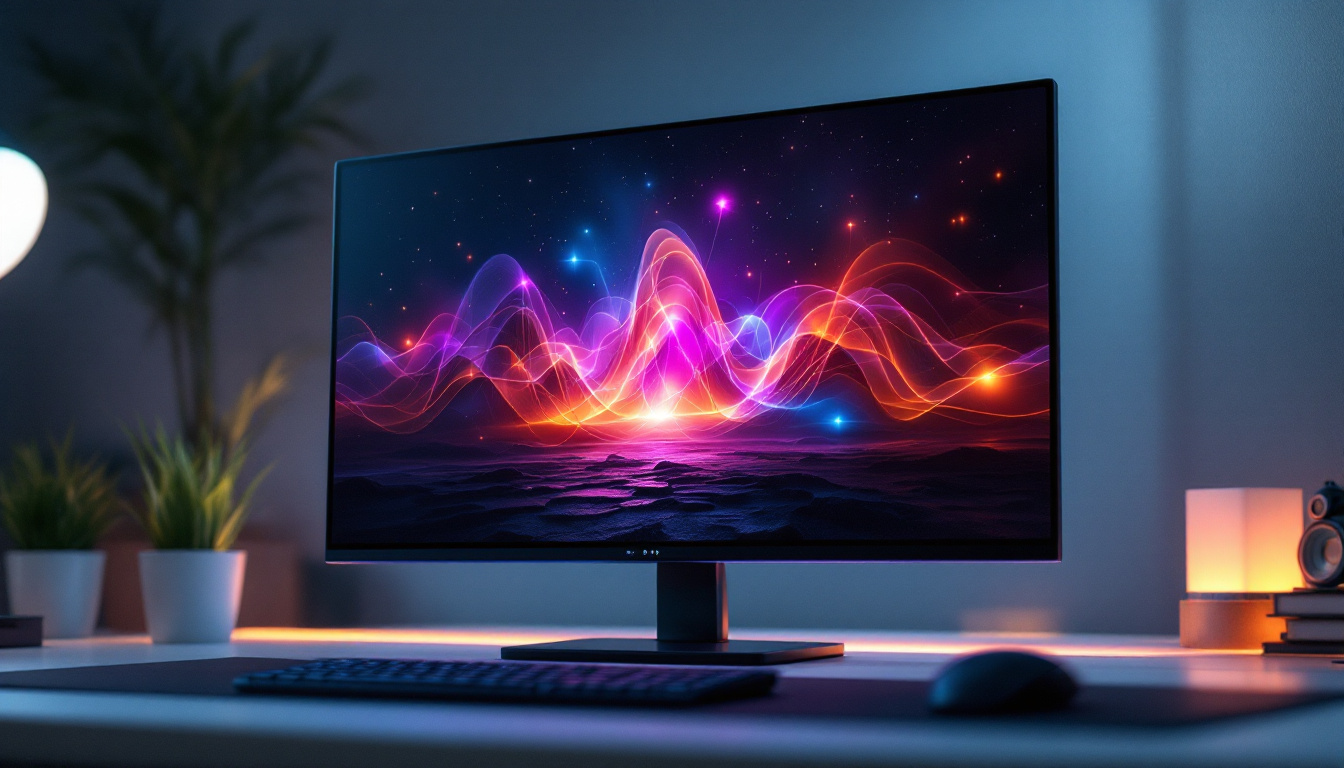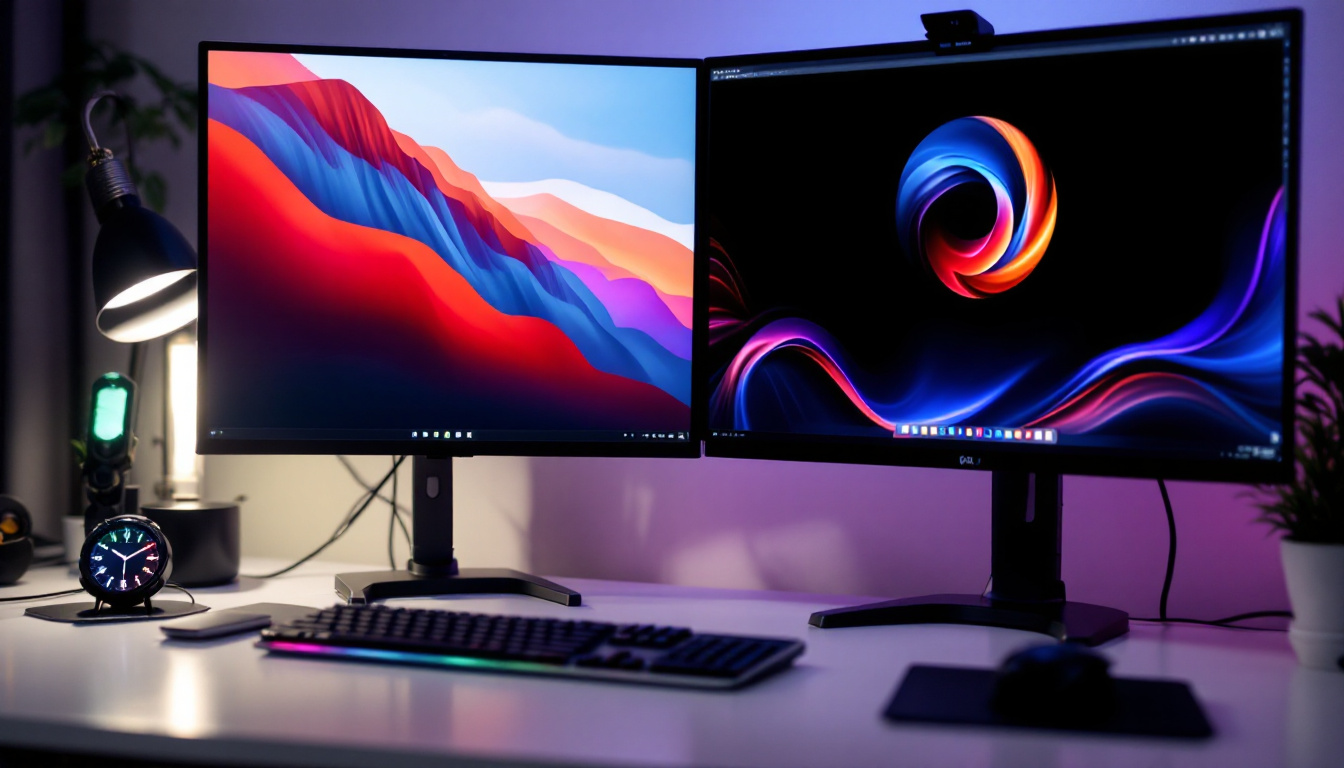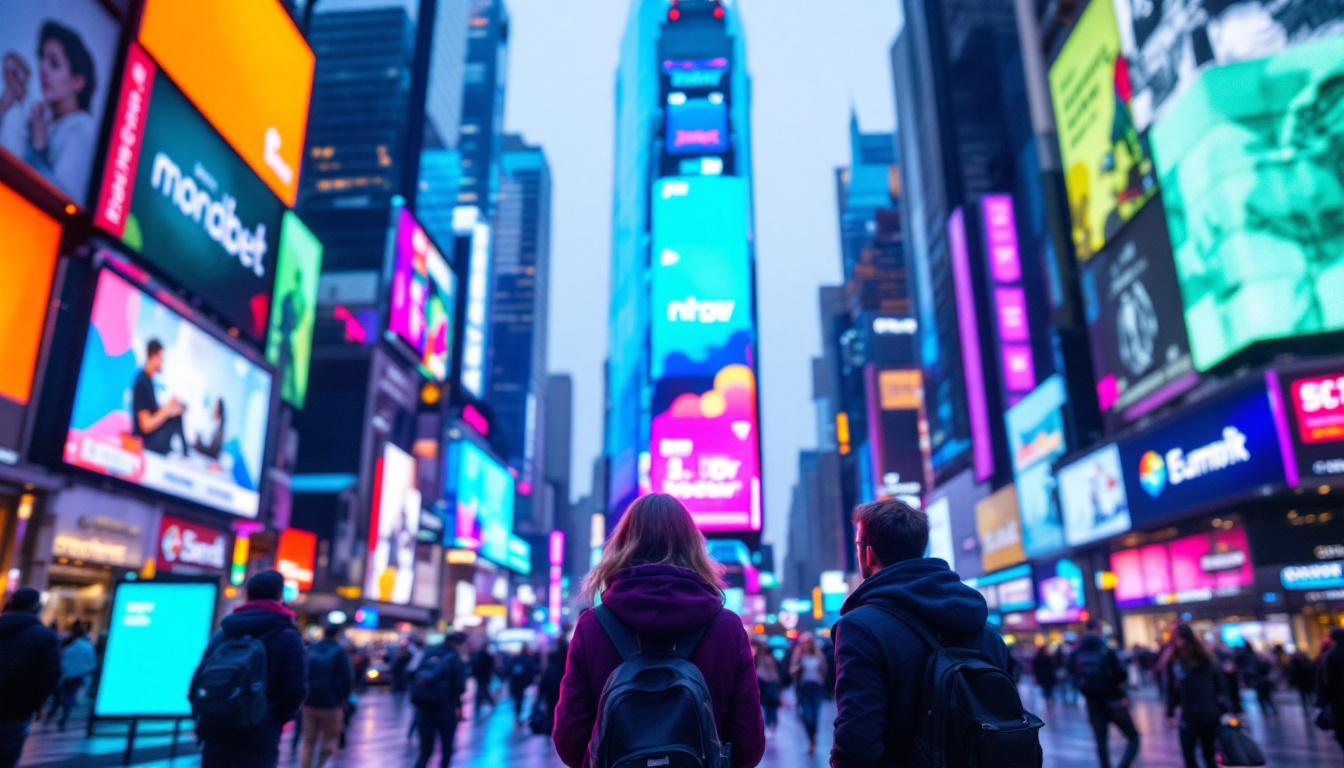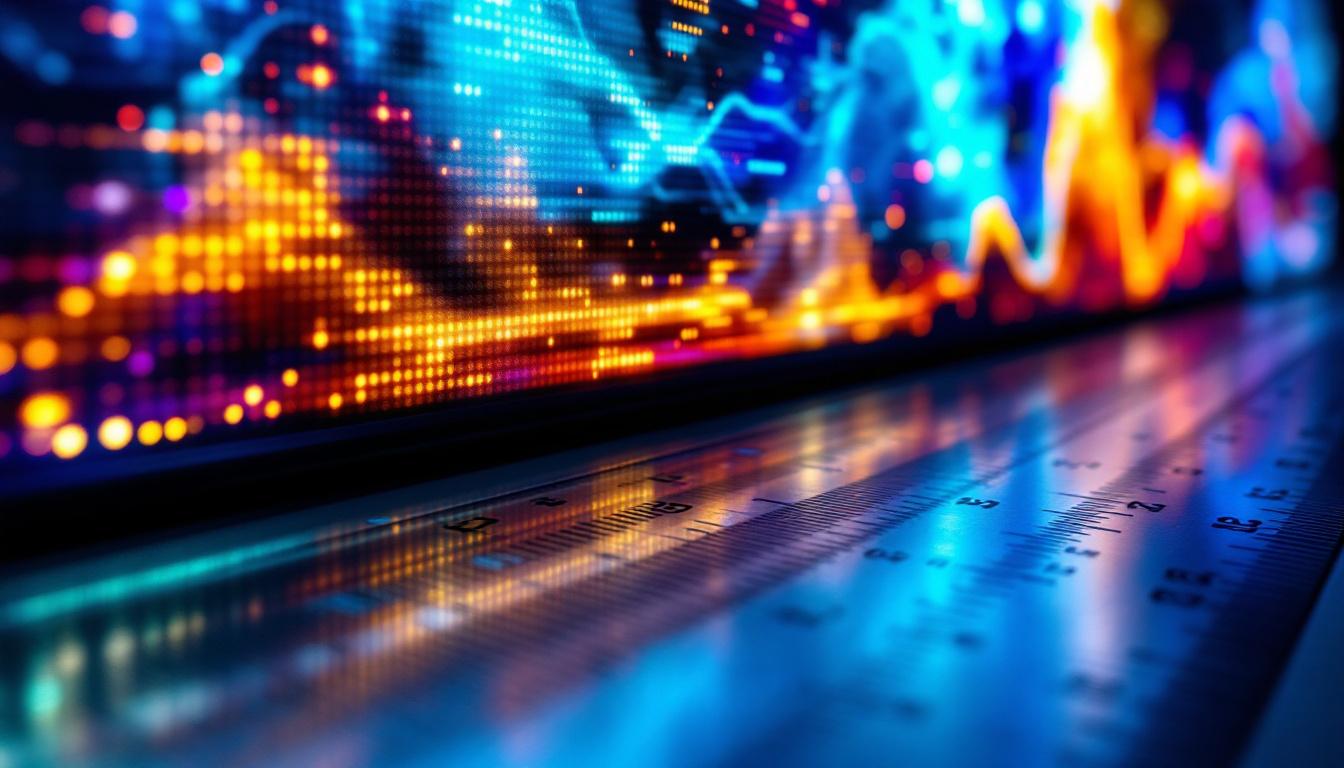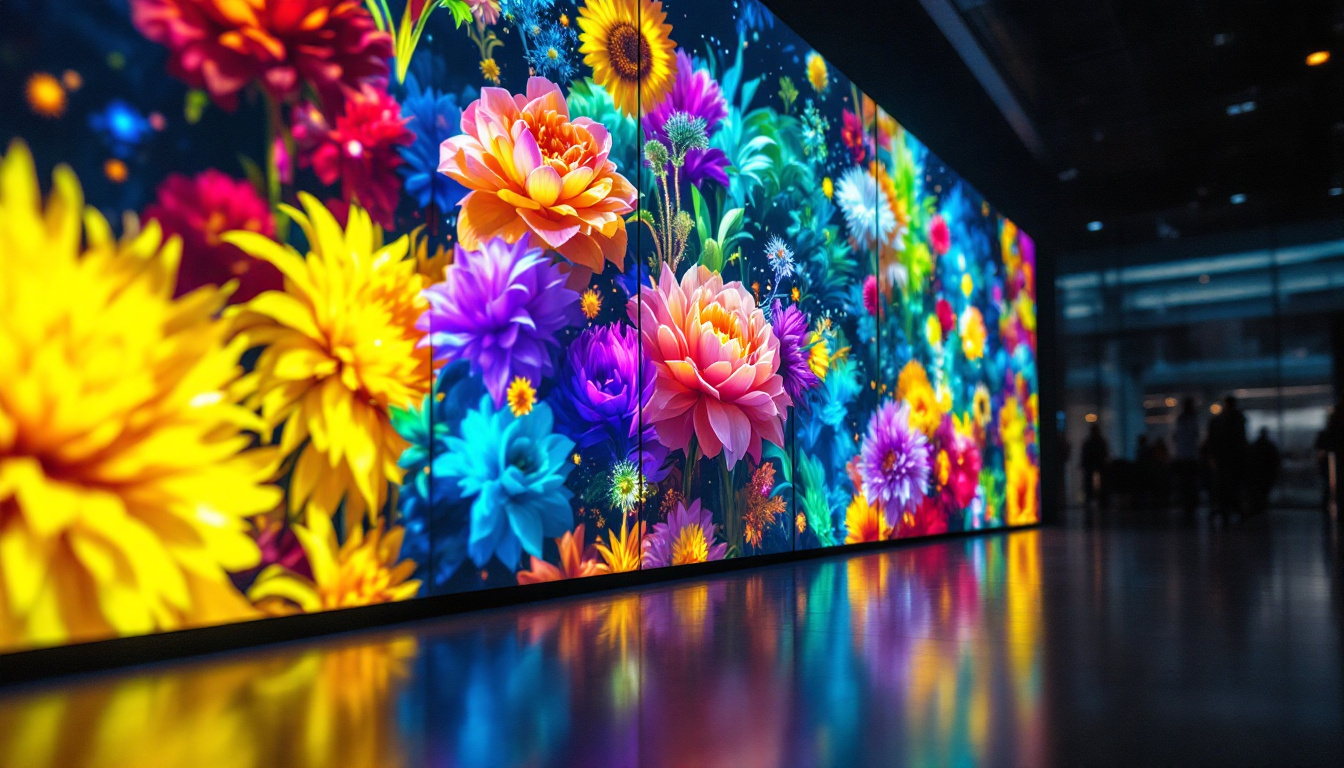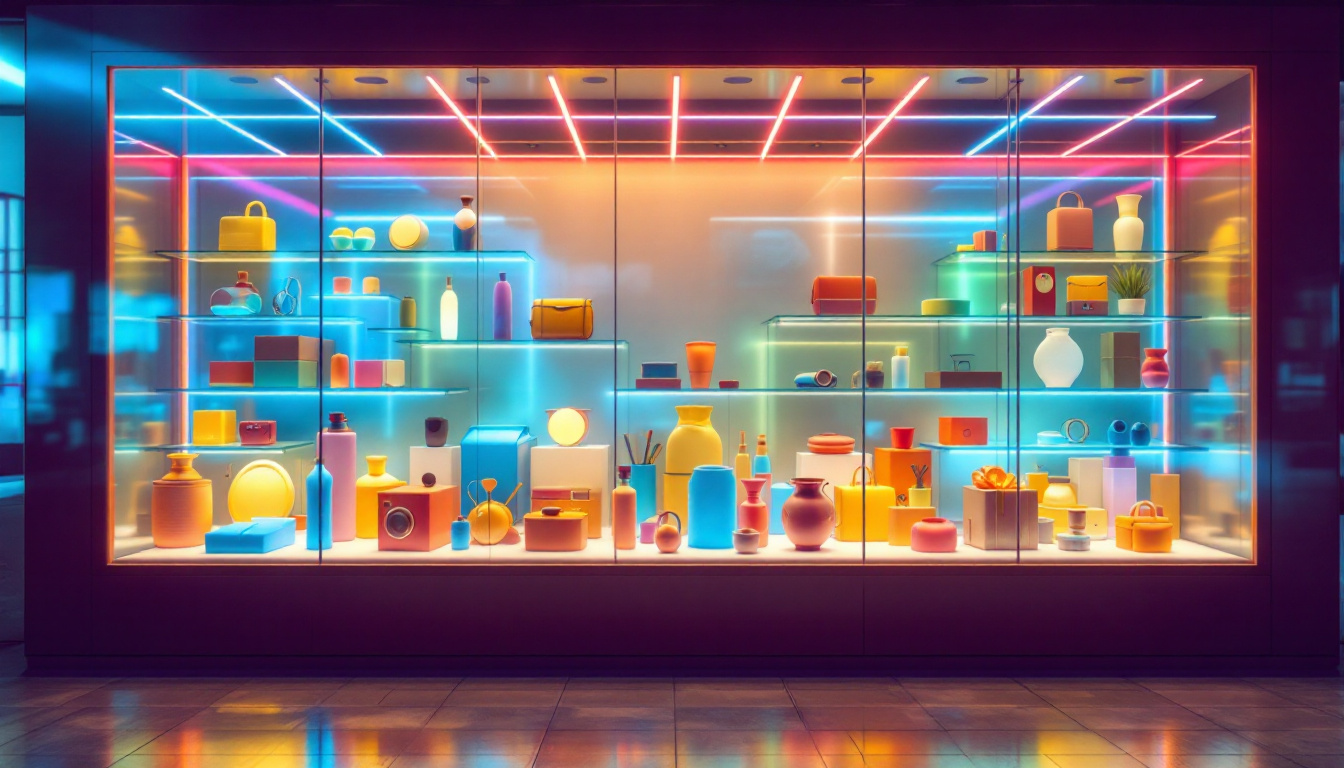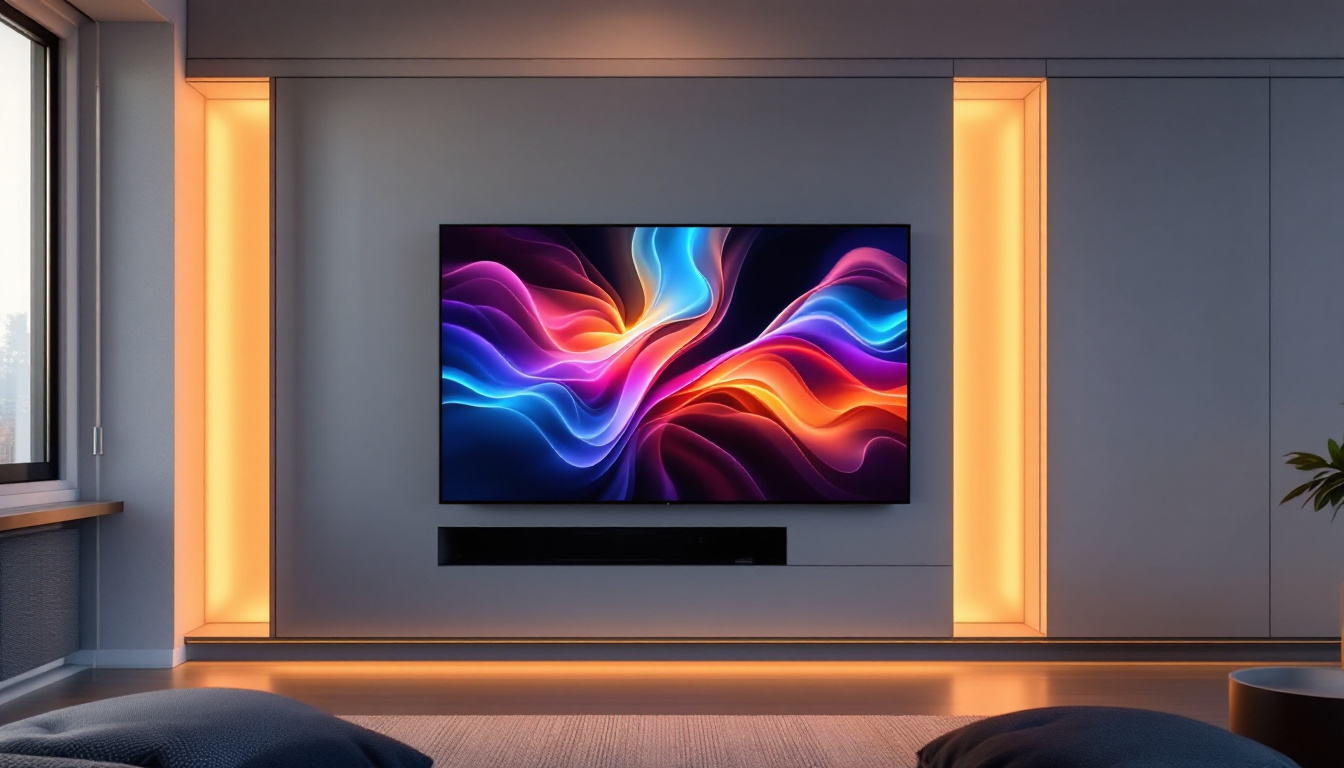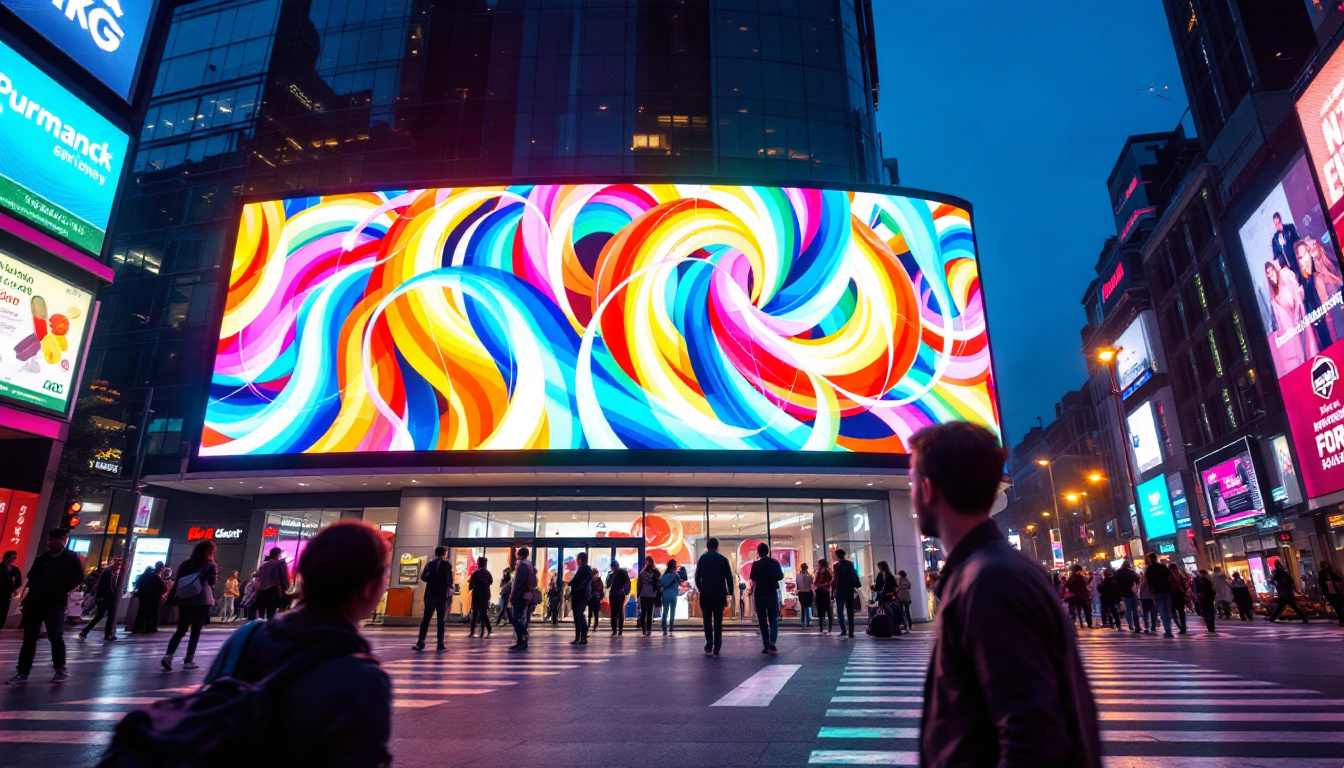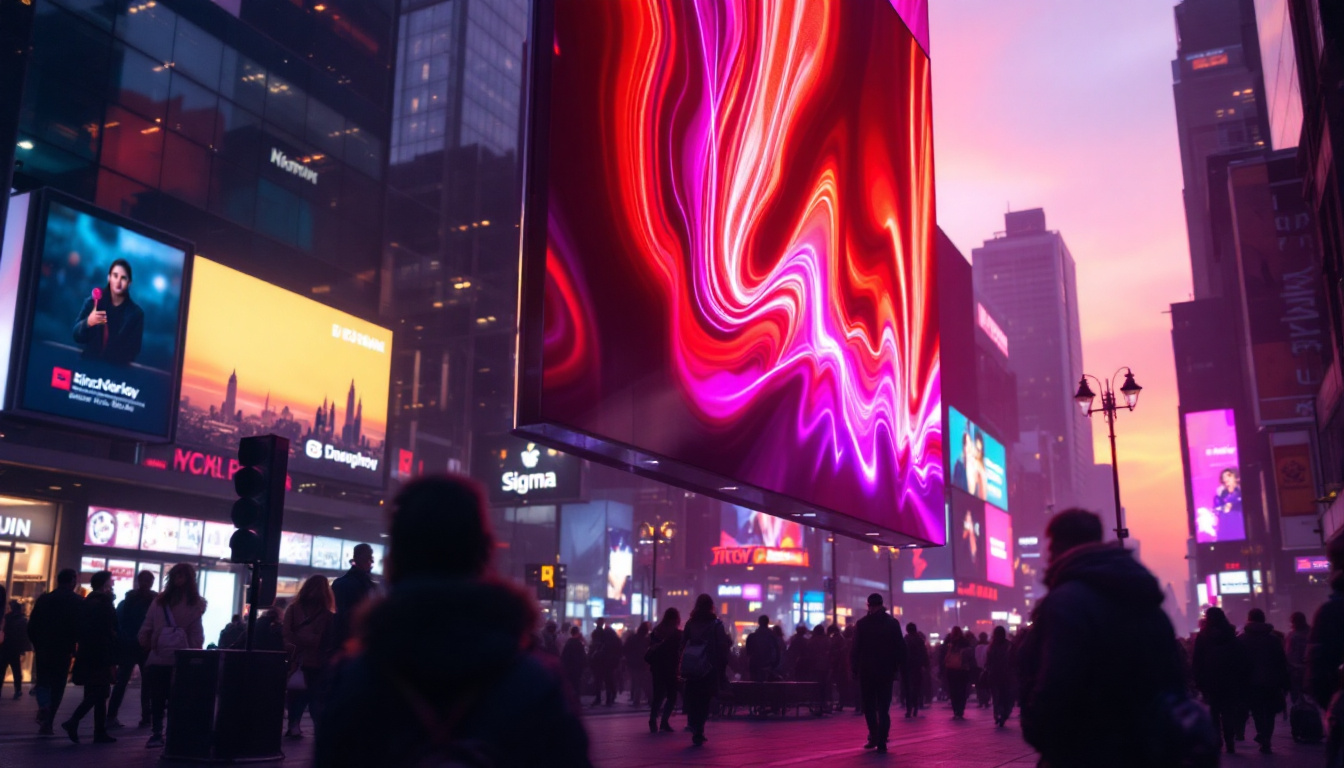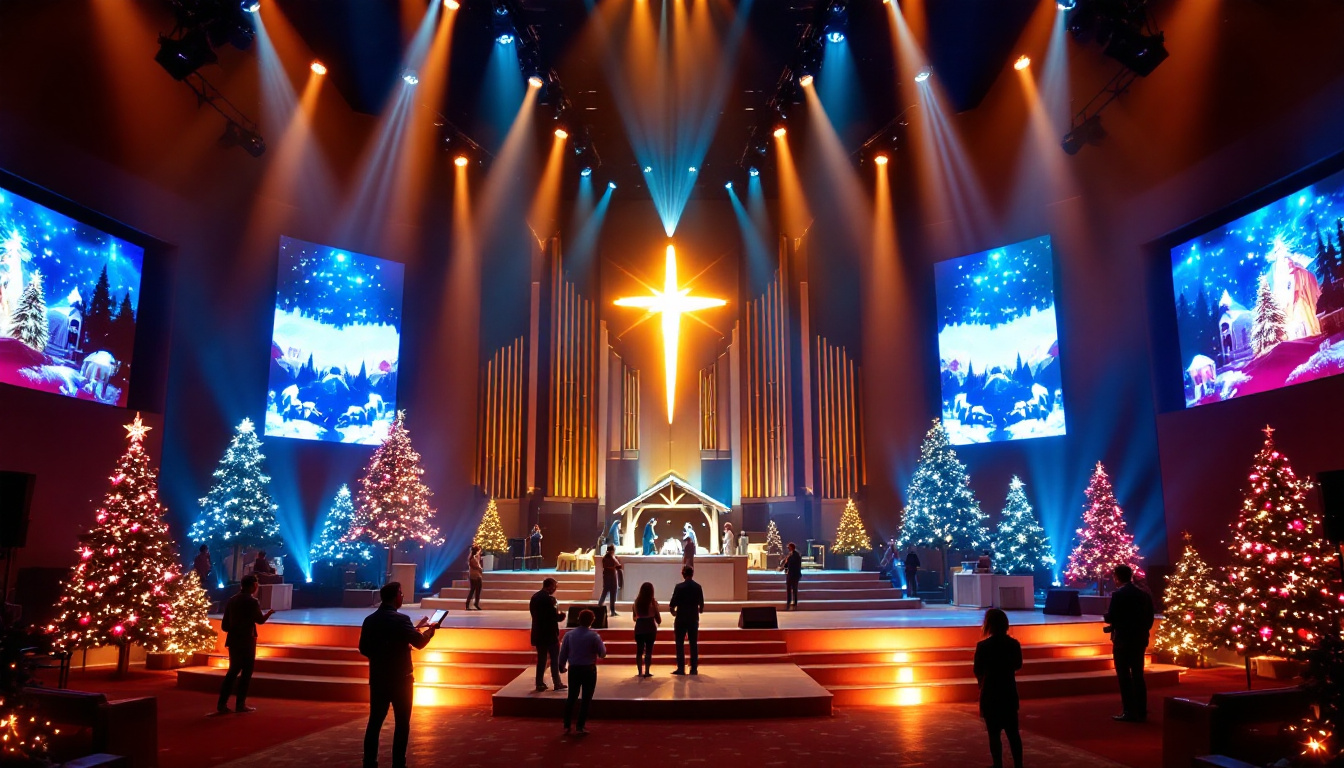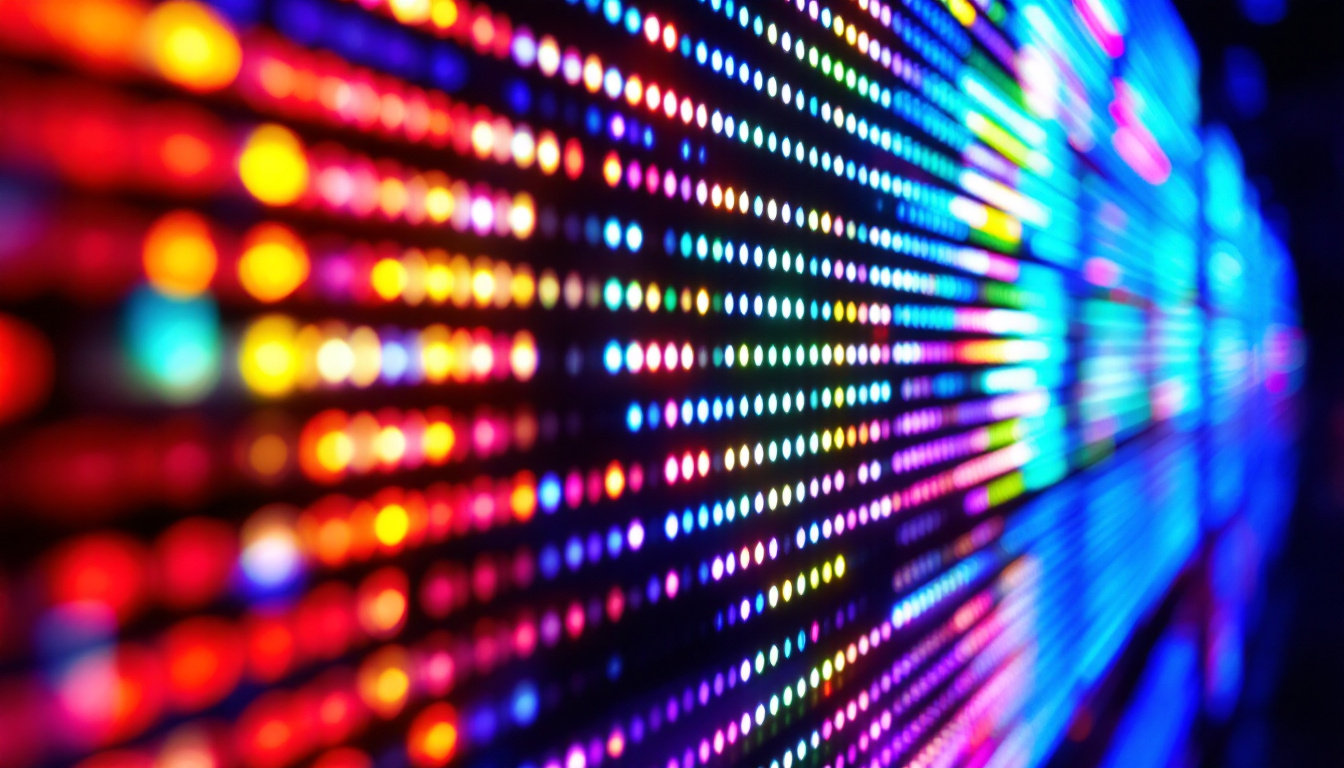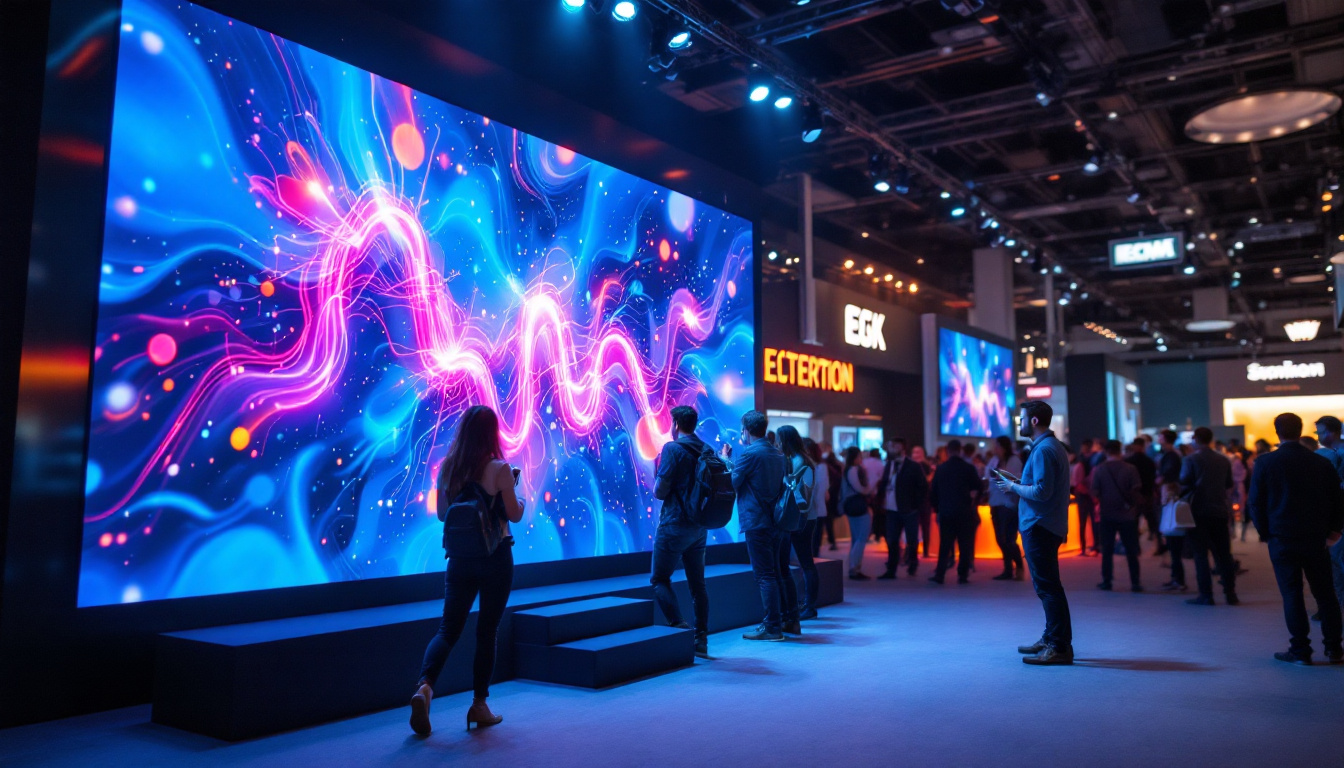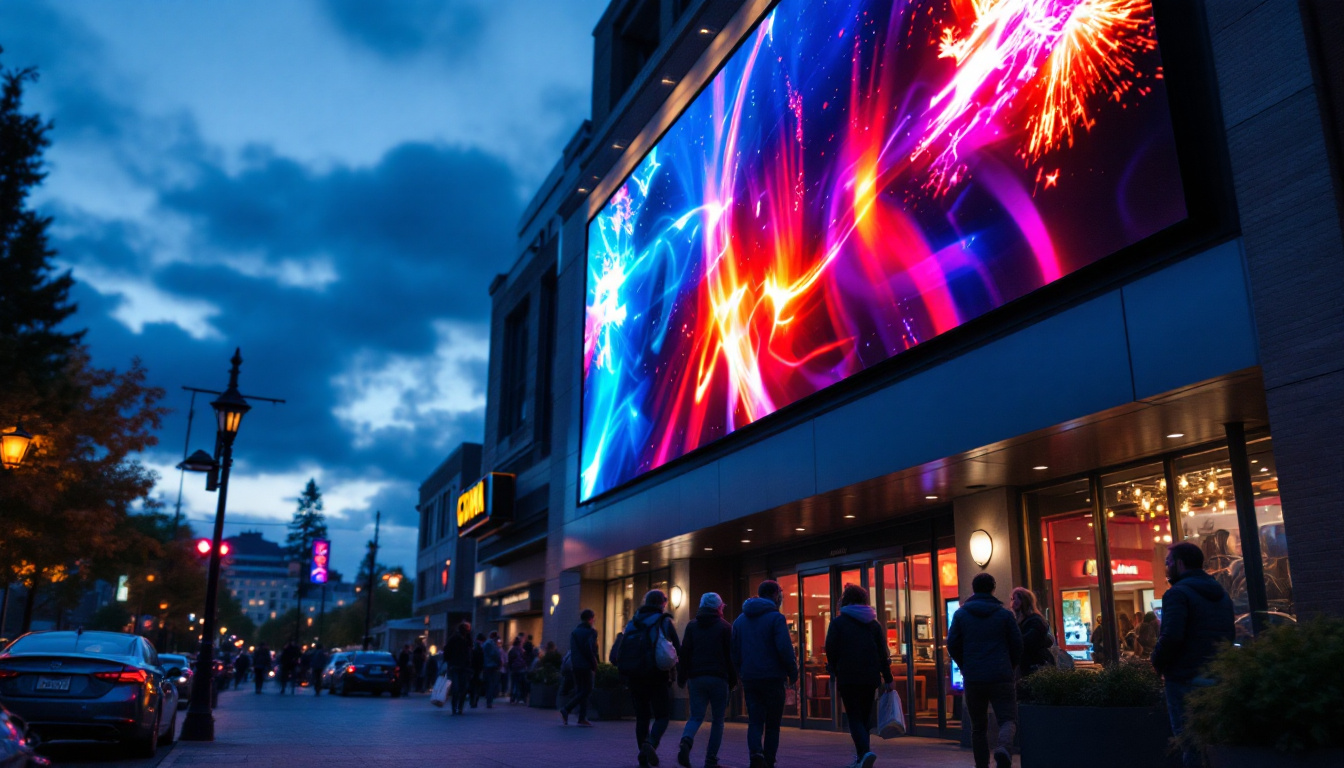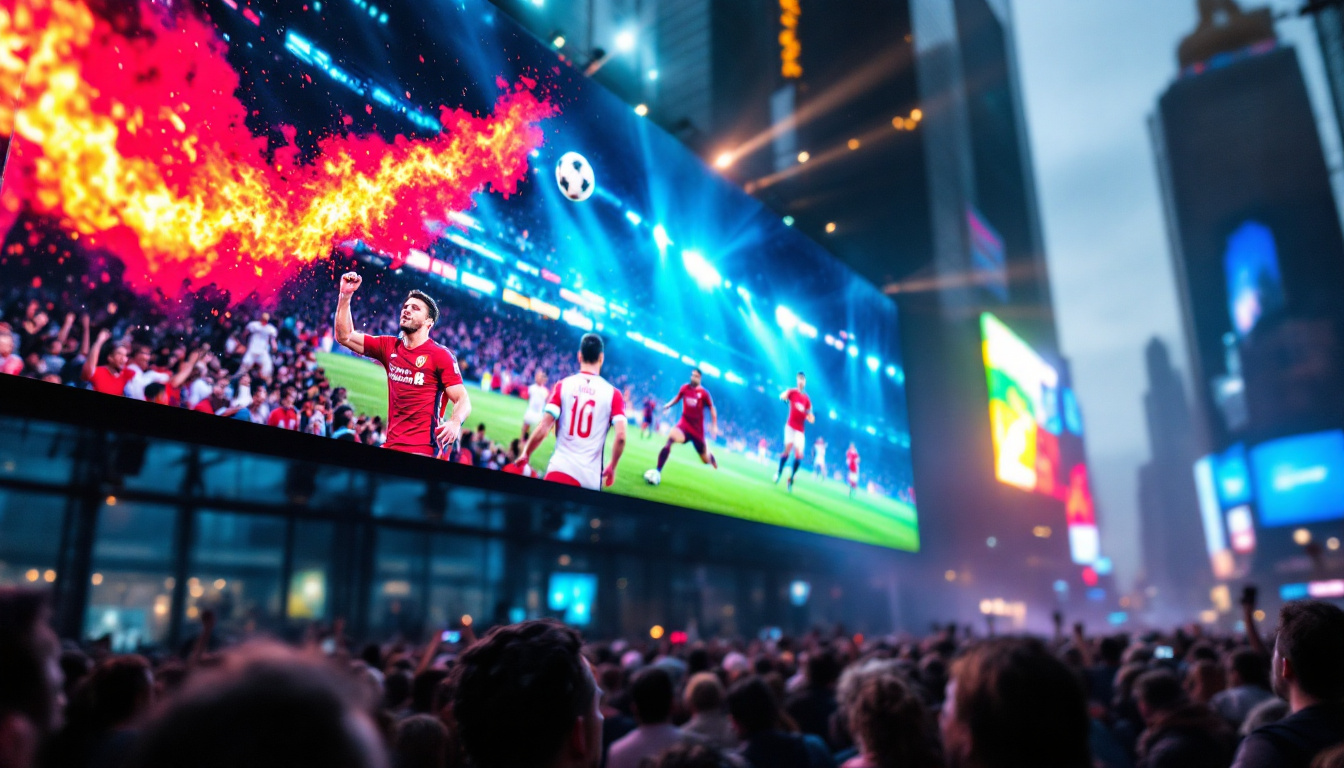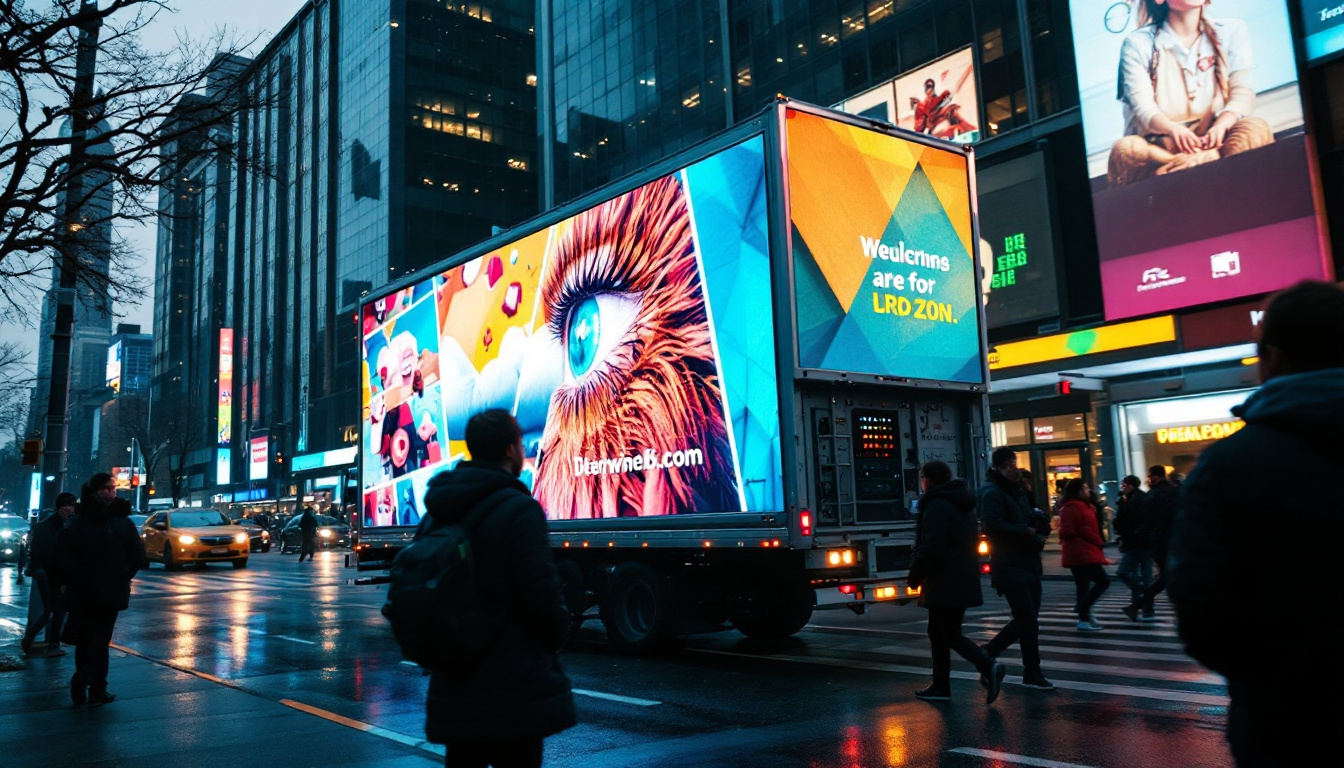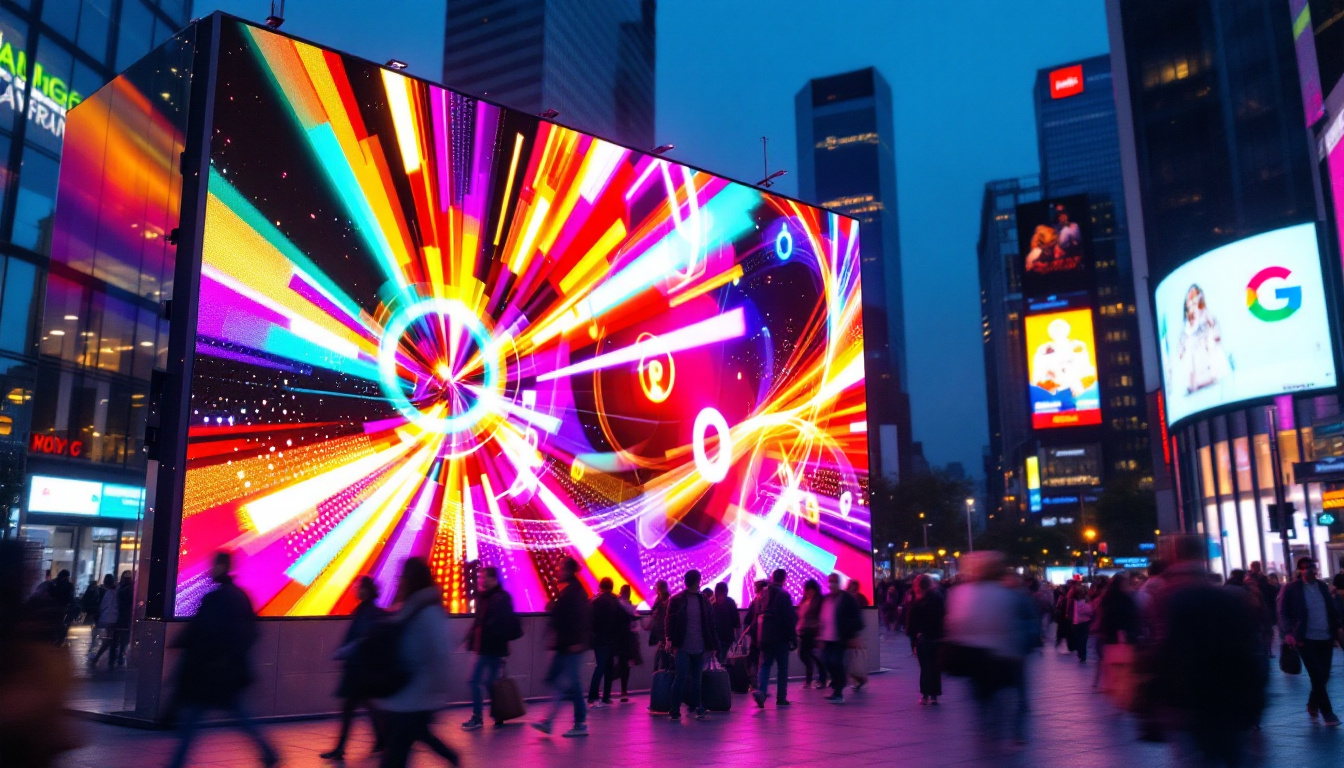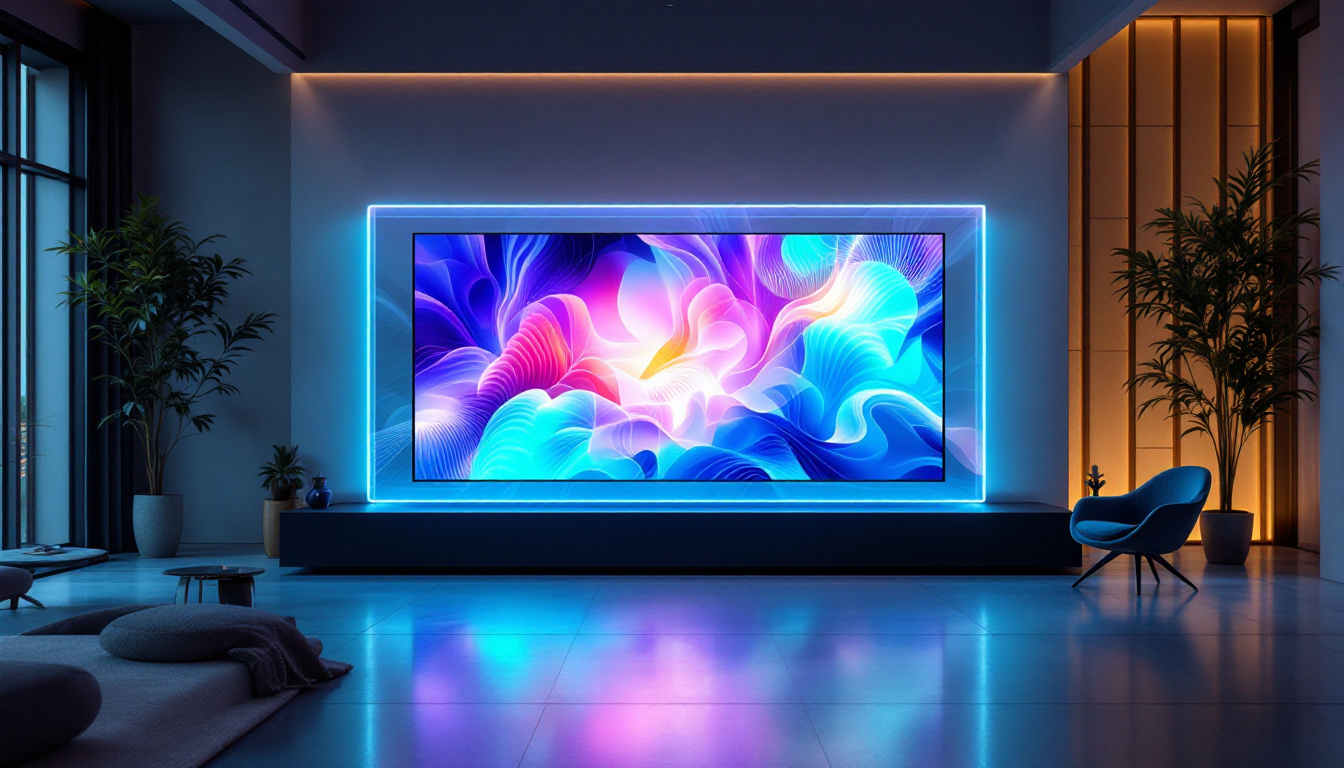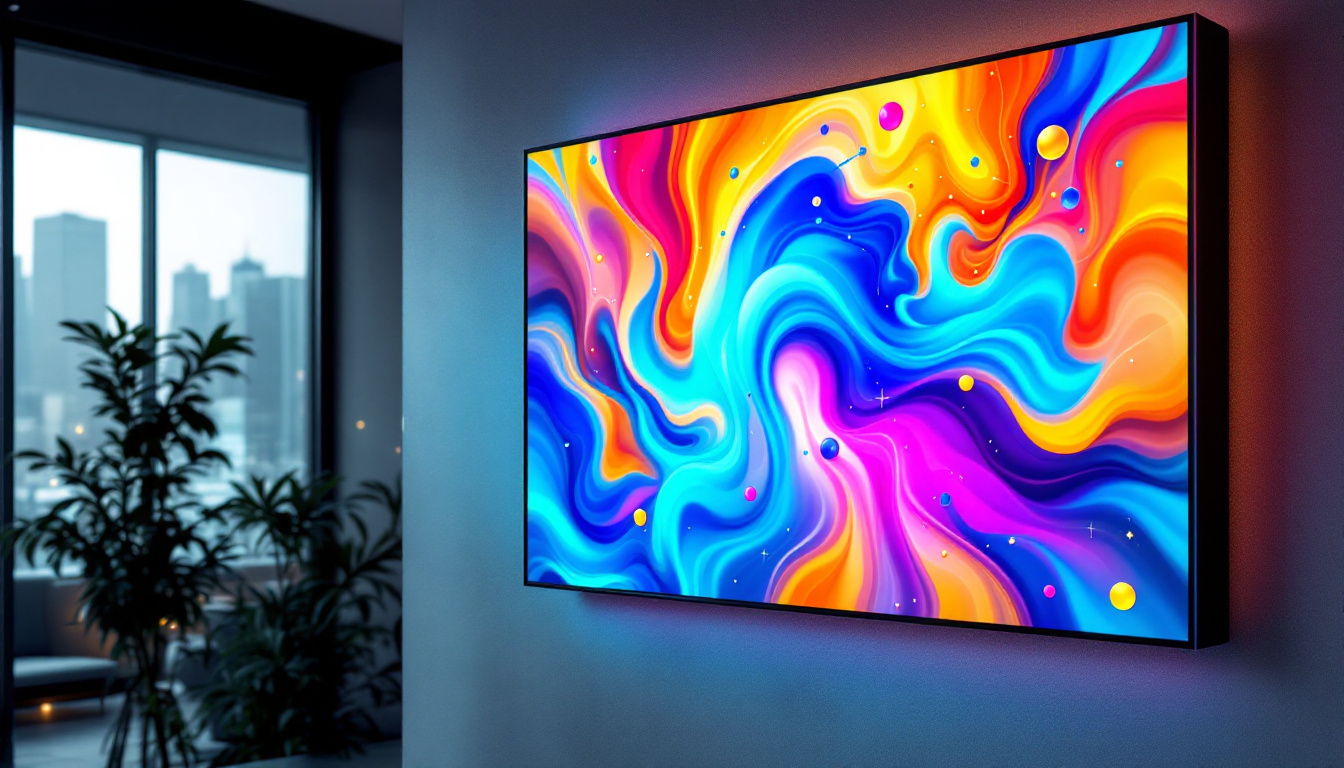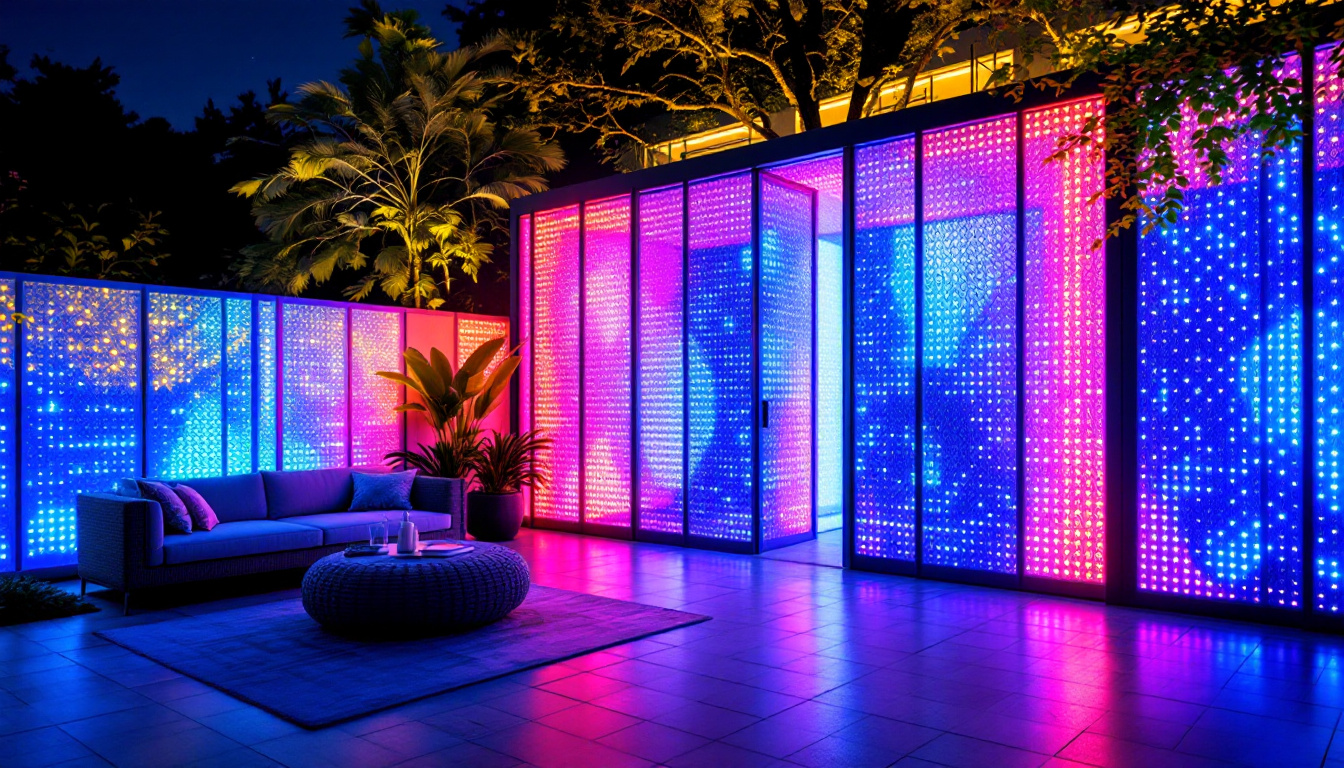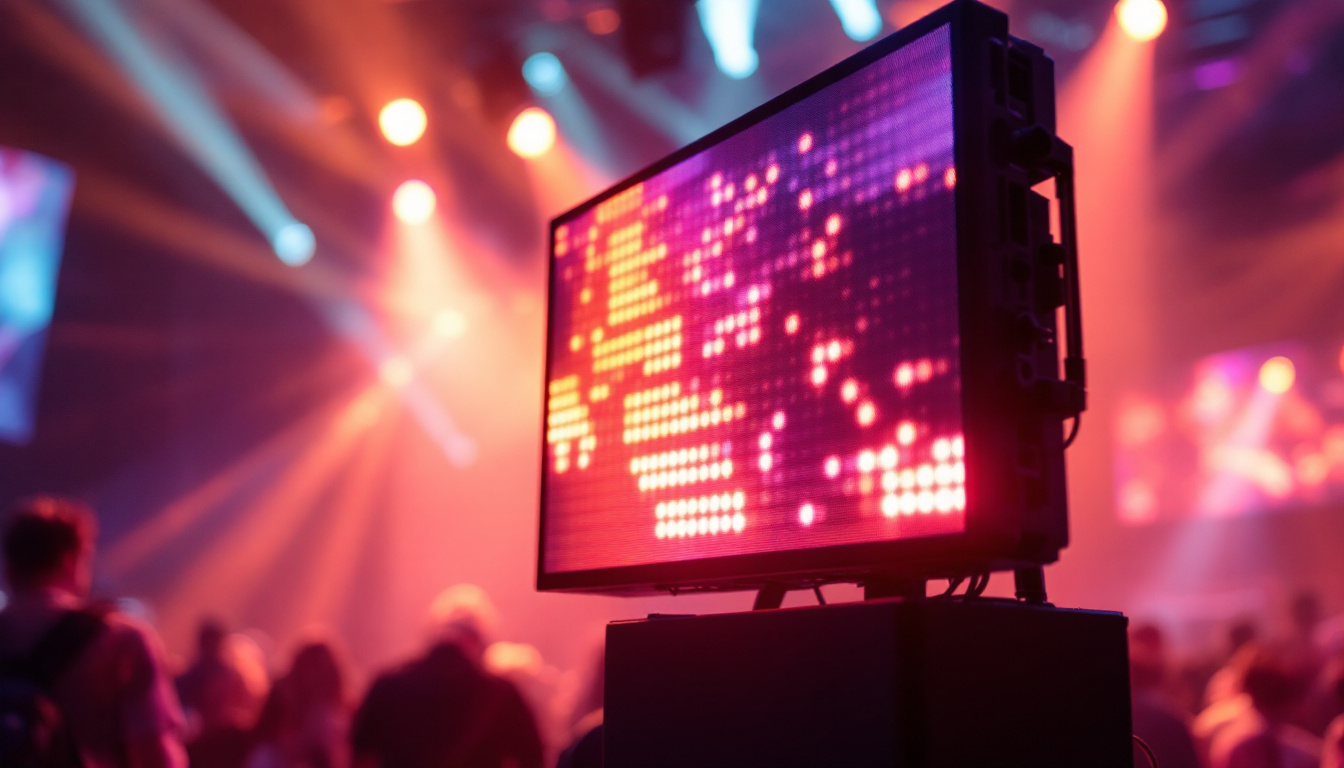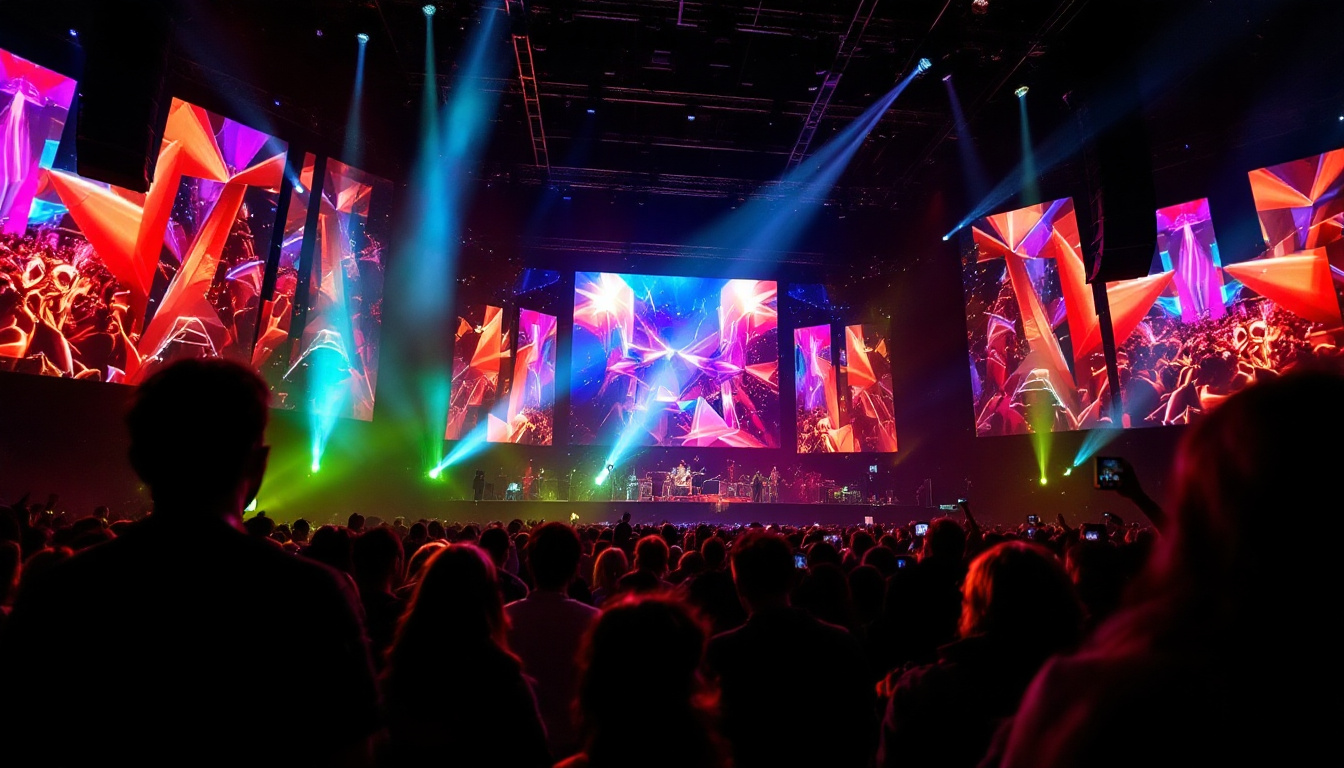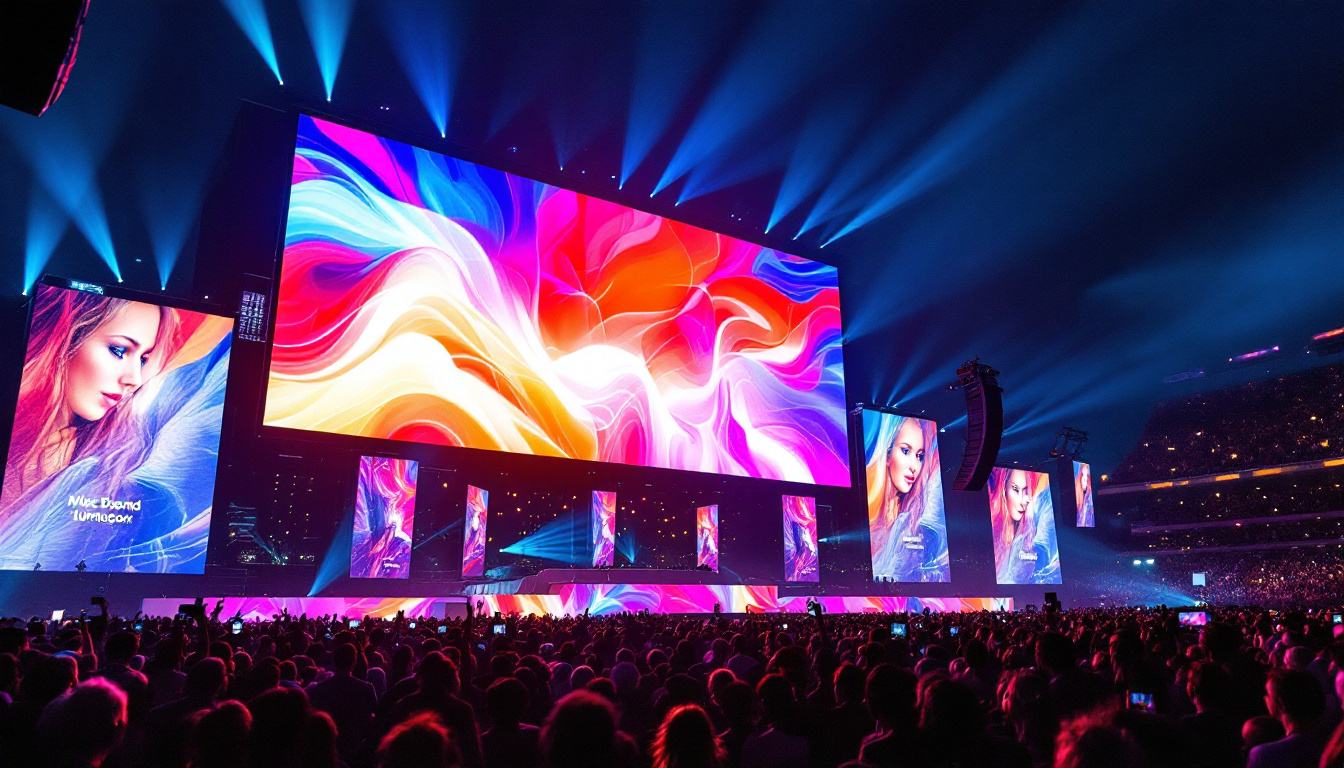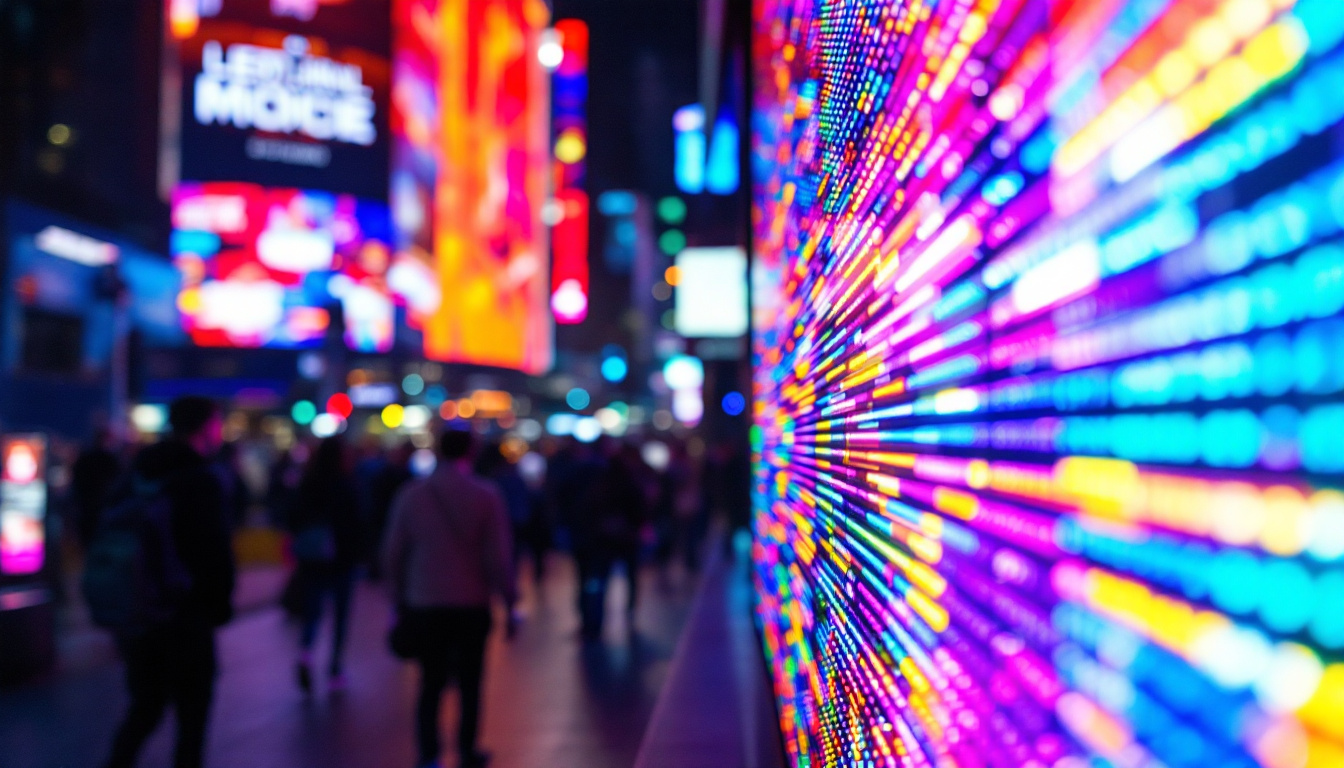In the modern world, visual communication has become more important than ever. From advertising to entertainment, LED displays have transformed the way we convey information and engage with audiences. This article delves into the intricacies of LED wall displays, exploring their technology, applications, and advantages.
Understanding LED Technology
Light Emitting Diodes (LEDs) are semiconductor devices that emit light when an electric current passes through them. The technology has evolved significantly since its inception, leading to the development of vibrant and energy-efficient displays used in various applications. From household lighting to massive outdoor screens, LEDs have transformed how we perceive and interact with light, making them an integral part of modern technology.
How LEDs Work
At the core of LED technology is the principle of electroluminescence. When electrons recombine with holes within the device, they release energy in the form of photons, producing light. The color of the emitted light depends on the materials used in the semiconductor. By combining different colors of LEDs—red, green, and blue—displays can produce a full spectrum of colors, enabling high-quality images and videos. This versatility allows for the creation of dynamic visual experiences, from the subtle hues of a sunset displayed on a smartphone screen to the vibrant colors of a digital billboard.
Moreover, advancements in LED technology have led to the development of tunable white LEDs, which can adjust their color temperature to mimic natural daylight. This feature is particularly beneficial in architectural lighting and photography, where the quality of light can significantly impact the aesthetic of a space or image. Additionally, the integration of smart technology with LEDs has paved the way for intelligent lighting systems that can be controlled remotely, offering convenience and energy savings.
Types of LED Displays
LED displays can be categorized into several types, each designed for specific applications. The most common types include:
- Direct View LED: These displays consist of individual LED modules that are directly visible to the viewer. They are often used for large outdoor billboards and indoor screens, providing high brightness and excellent visibility even in direct sunlight.
- LED Backlit Displays: These displays use LEDs to illuminate an LCD panel from behind, enhancing brightness and color accuracy. They are commonly found in televisions and computer monitors, where the backlighting improves the overall viewing experience by providing deeper blacks and more vibrant colors.
- Organic LED (OLED): Unlike traditional LEDs, OLEDs use organic compounds to produce light. They offer superior color reproduction and contrast ratios, making them ideal for high-end displays. OLED technology also allows for thinner and more flexible screens, opening up new possibilities for innovative designs in smartphones and televisions.
In addition to these types, there are also specialized LED displays such as MicroLED and MiniLED, which promise even greater efficiency and image quality. MicroLED technology utilizes tiny, microscopic LEDs that can be individually controlled, resulting in displays with exceptional brightness and contrast. MiniLED, on the other hand, enhances traditional LCD screens by using thousands of tiny LEDs for backlighting, significantly improving local dimming capabilities and overall picture quality. As these technologies continue to develop, they are likely to redefine the landscape of visual displays, pushing the boundaries of what is possible in digital imagery.
Applications of LED Wall Displays
LED wall displays have a wide range of applications across various industries, including advertising, entertainment, education, and more. Their versatility and visual appeal make them a popular choice for many organizations.
Advertising and Marketing
In the advertising sector, LED displays have revolutionized how brands communicate with consumers. Digital billboards and storefront displays can showcase dynamic content, allowing businesses to change their messages in real-time. This flexibility not only attracts attention but also engages viewers with interactive content. Furthermore, the ability to integrate social media feeds and live updates into these displays enables brands to create a more immersive experience, fostering a deeper connection with their audience. The use of LED technology also allows for energy-efficient advertising solutions, which can be particularly appealing to environmentally conscious consumers.
Entertainment Venues
From concert stages to sports arenas, LED displays have become a staple in the entertainment industry. They provide vibrant visuals that enhance the audience’s experience, whether through live event broadcasting or immersive visual effects. Large-scale LED screens are often used to display high-definition video feeds, graphics, and animations, creating a captivating atmosphere. In addition to concerts and sports events, LED displays are also employed in theme parks and festivals, where they can transform spaces with dazzling light shows and synchronized performances. This technology not only elevates the entertainment value but also serves as a powerful storytelling tool, allowing creators to convey narratives in visually stunning ways.
Corporate and Educational Settings
LED displays are increasingly being utilized in corporate environments for presentations, conferences, and training sessions. Their ability to display high-quality visuals makes them ideal for conveying complex information effectively. In educational settings, LED displays can facilitate interactive learning experiences, engaging students through multimedia presentations. Moreover, the use of touch-enabled LED screens in classrooms allows for collaborative learning, where students can participate actively in discussions and projects. This interactive approach not only enhances retention but also fosters teamwork and communication skills among students. As technology continues to evolve, the integration of augmented reality (AR) and virtual reality (VR) with LED displays promises to further enrich educational experiences, making learning more engaging and accessible than ever before.
Advantages of LED Displays
LED displays offer numerous advantages over traditional display technologies, making them a preferred choice for many applications. Understanding these benefits can help organizations make informed decisions when investing in display solutions.
Energy Efficiency
One of the most significant advantages of LED technology is its energy efficiency. LED displays consume considerably less power than traditional incandescent or fluorescent displays, resulting in lower energy costs. This efficiency not only benefits the environment but also contributes to long-term savings for businesses.
Longevity and Durability
LED displays are known for their longevity, often lasting tens of thousands of hours. Unlike traditional displays that may suffer from burn-in or degradation over time, LED technology is robust and designed to withstand various environmental conditions. This durability makes them suitable for both indoor and outdoor applications.
High Brightness and Contrast
LED displays are capable of producing exceptionally bright images, making them easily viewable in various lighting conditions. Their high contrast ratios enhance image quality, ensuring that colors appear vibrant and details remain sharp. This feature is particularly important for outdoor displays exposed to sunlight.
Challenges and Considerations
While LED displays offer numerous advantages, there are also challenges and considerations that organizations should keep in mind when implementing this technology.
Initial Costs
The initial investment for LED displays can be higher than traditional display options. However, when considering the long-term benefits, such as energy savings and reduced maintenance costs, the overall return on investment can be favorable. Organizations should weigh the upfront costs against the potential savings over time.
Maintenance and Upkeep
Although LED displays are generally durable, they still require regular maintenance to ensure optimal performance. Dust and debris can accumulate on the surface, affecting image quality. Additionally, any faulty LED modules may need to be replaced promptly to maintain uniformity in brightness and color.
Viewing Distance and Angle
Another consideration is the viewing distance and angle. The pixel pitch of an LED display determines how close viewers can be without noticing individual pixels. For larger displays, a wider viewing angle is essential to ensure that the content remains visible from various positions. Organizations should choose the appropriate pixel pitch based on the intended viewing environment.
Future Trends in LED Display Technology
The LED display industry is continuously evolving, with new technologies and innovations emerging regularly. Staying informed about these trends can help organizations leverage the latest advancements for their benefit.
MicroLED Technology
MicroLED is an emerging technology that promises to revolutionize the display industry. This technology uses microscopic LEDs to create individual pixels, resulting in higher resolution and better color accuracy. MicroLED displays are also more energy-efficient and offer improved contrast ratios compared to traditional LED displays.
Flexible and Transparent Displays
Another exciting trend is the development of flexible and transparent LED displays. These innovative displays can be bent or shaped to fit various surfaces, opening new possibilities for creative installations. Transparent displays allow for seamless integration into architectural designs, enabling brands to showcase content without obstructing views.
Integration with Smart Technology
As smart technology continues to advance, LED displays are increasingly being integrated with IoT (Internet of Things) capabilities. This integration allows for real-time data sharing, remote management, and enhanced interactivity. Organizations can leverage these features to create dynamic and engaging content tailored to their audience’s preferences.
Conclusion
LED wall displays have transformed the landscape of visual communication, offering vibrant, energy-efficient, and versatile solutions for a wide range of applications. As technology continues to evolve, organizations that embrace LED displays will be better positioned to engage their audiences and convey their messages effectively. By understanding the technology, applications, advantages, and future trends, businesses can make informed decisions that enhance their visual communication strategies.
In an era where attention spans are shorter than ever, investing in high-quality LED displays can significantly impact how brands connect with their audiences. Whether for advertising, entertainment, or corporate communication, LED displays are poised to remain a crucial element in the visual landscape for years to come.
Illuminate Your Message with LumenMatrix
As you consider the vast potential of LED displays to revolutionize your visual communication, LumenMatrix stands at the forefront of this innovative technology. Our extensive range of solutions, from Indoor and Outdoor LED Wall Displays to specialized options like Vehicle, Sports, and Floor LED Displays, are designed to captivate and engage your audience. With our commitment to cutting-edge technology and your desire to create unforgettable visual experiences, the possibilities are limitless. Check out LumenMatrix LED Display Solutions today and take the first step towards transforming your brand’s visibility and audience engagement.

